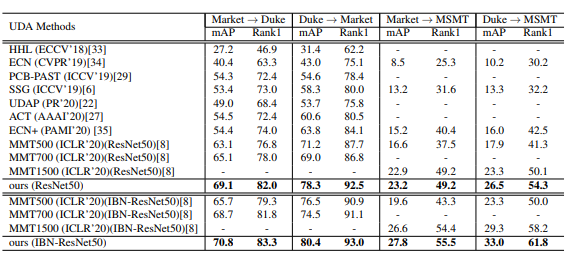Enhancing Diversity in Teacher-Student Networks via Asymmetric branches for Unsupervised Person Re-identification
The objective of unsupervised person re-identification (Re-ID) is to learn discriminative features without labor-intensive identity annotations. State-of-the-art unsupervised Re-ID methods assign pseudo labels to unlabeled images in the target domain and learn from these noisy pseudo labels. Recently introduced Mean Teacher Model is a promising way to mitigate the label noise. However, during the training, self-ensembled teacher-student networks quickly converge to a consensus which leads to a local minimum. We explore the possibility of using an asymmetric structure inside neural network to address this problem. First, asymmetric branches are proposed to extract features in different manners, which enhances the feature diversity in appearance signatures. Then, our proposed cross-branch supervision allows one branch to get supervision from the other branch, which transfers distinct knowledge and enhances the weight diversity between teacher and student networks. Extensive experiments show that our proposed method can significantly surpass the performance of previous work on both unsupervised domain adaptation and fully unsupervised Re-ID tasks.
PDF Abstract




 ImageNet
ImageNet
 DukeMTMC-reID
DukeMTMC-reID